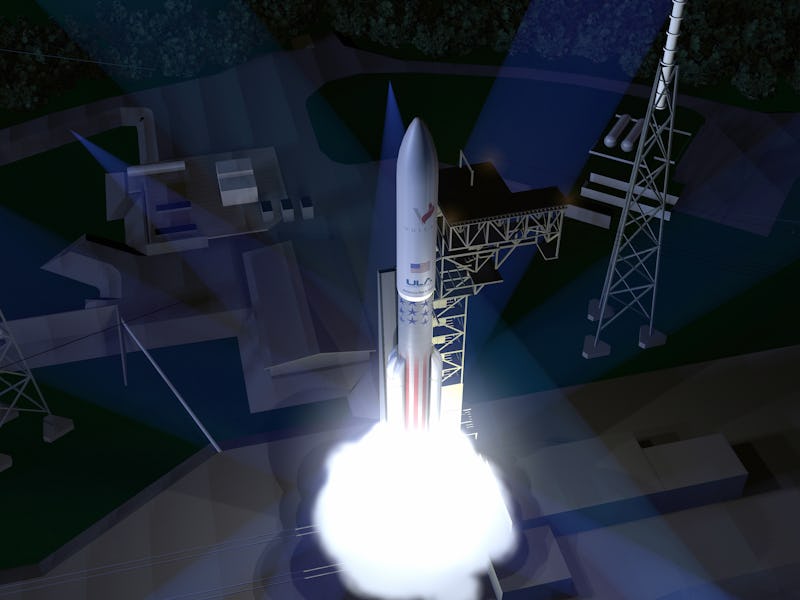United Launch Alliance has been pretty open about its plans to install Blue Origin’s new BE-4 engines into the company’s new Vulcan launch vehicle for large payloads. At the 33rd Space Symposium in Colorado Springs on Wednesday, ULA reaffirmed its commitment to the BE-4 — as long as it passes upcoming tests.
In an interview with SpaceNews, ULA CEO Tony Bruno said BE-4 engine tests would be soon held at Blue Origin’s testing grounds in West Texas. This is basically the last milestone before ULA can finally move forward with plans to build the Vulcan architecture around the BE-4.
If the tests go smoothly, Bruno thinks ULA could officially pick BE-4 for Vulcan in just two to three months. Rob Meyerson, president of Blue Origin, told SpaceNews his company would test BE-4 sometime in the next several weeks — with one engine already at the West Texas site, and two more to ship over soon. Final certification of BE-4 is currently planned for sometime between late 2018 and early 2019.
The two companies formalized the Vulcan-BE-4 agreement nearly two-and-a-half years ago. BE-4 has been Blue Origin’s solution to helping U.S. rocket developers ween off of relying on Russian-made RD-180 engines — a goal the government and private industry alike has worked hard to achieve.
One of the more novel traits of the BE-4 is its use of methane as fuel, rather than something conventional like kerosene or liquid hydrogen. If BE-4 flames out of its upcoming tests, Aerojet Rocketdyne’s AR1 engine is the runner-up for Vulcan. AR1 development is nearly two years behind BE-4, but Bruno believes that engine should not run into any problems since it uses kerosene.
Nevertheless, Blue Origin is much further along in getting its engine ready for commercial use and large-scale production. If all things go well, the U.S. could finally be closer to regaining spaceflight independence in at least one key factor.
